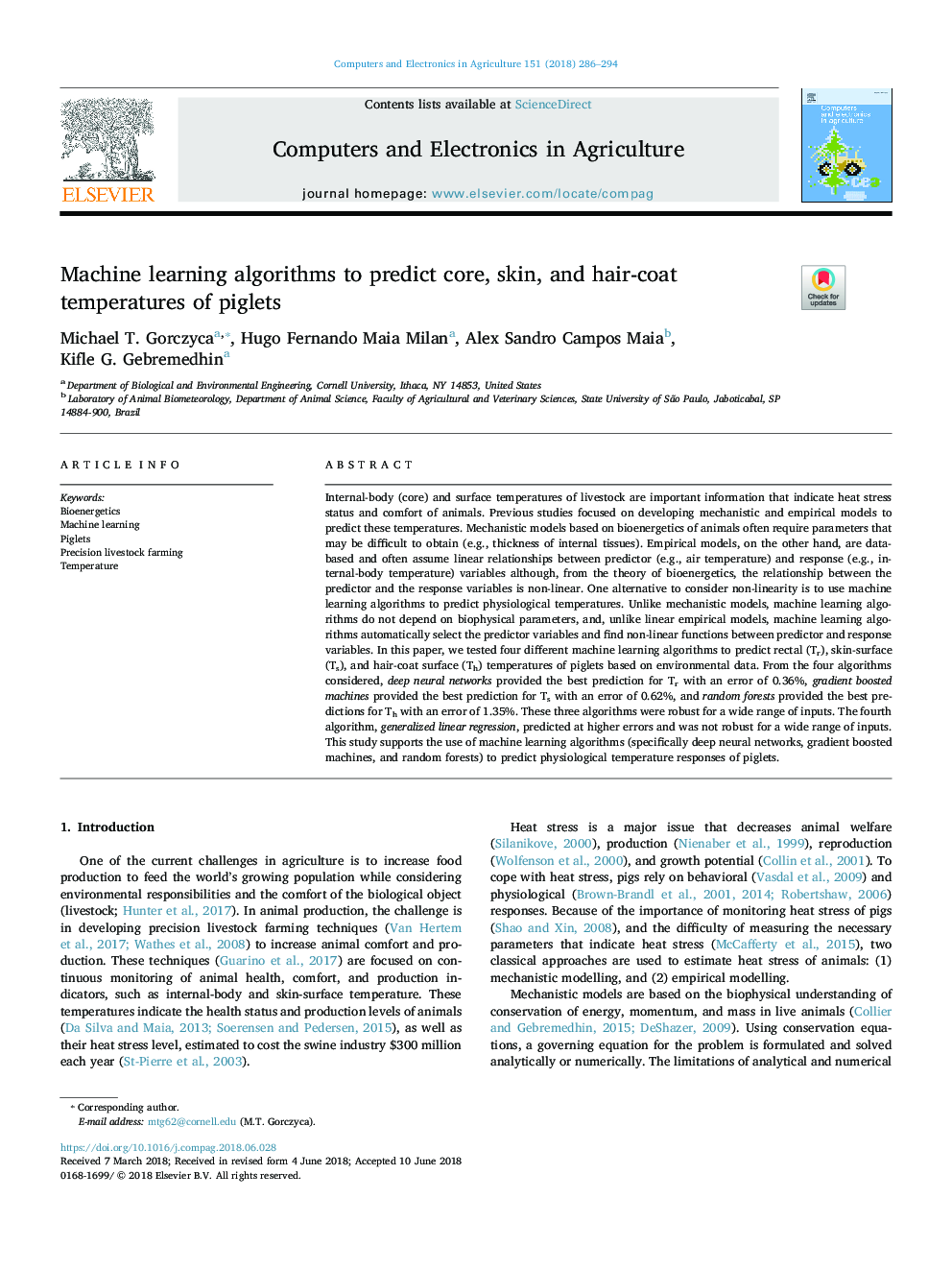| Article ID | Journal | Published Year | Pages | File Type |
|---|---|---|---|---|
| 6539398 | Computers and Electronics in Agriculture | 2018 | 9 Pages |
Abstract
Internal-body (core) and surface temperatures of livestock are important information that indicate heat stress status and comfort of animals. Previous studies focused on developing mechanistic and empirical models to predict these temperatures. Mechanistic models based on bioenergetics of animals often require parameters that may be difficult to obtain (e.g., thickness of internal tissues). Empirical models, on the other hand, are data-based and often assume linear relationships between predictor (e.g., air temperature) and response (e.g., internal-body temperature) variables although, from the theory of bioenergetics, the relationship between the predictor and the response variables is non-linear. One alternative to consider non-linearity is to use machine learning algorithms to predict physiological temperatures. Unlike mechanistic models, machine learning algorithms do not depend on biophysical parameters, and, unlike linear empirical models, machine learning algorithms automatically select the predictor variables and find non-linear functions between predictor and response variables. In this paper, we tested four different machine learning algorithms to predict rectal (Tr), skin-surface (Ts), and hair-coat surface (Th) temperatures of piglets based on environmental data. From the four algorithms considered, deep neural networks provided the best prediction for Tr with an error of 0.36%, gradient boosted machines provided the best prediction for Ts with an error of 0.62%, and random forests provided the best predictions for Th with an error of 1.35%. These three algorithms were robust for a wide range of inputs. The fourth algorithm, generalized linear regression, predicted at higher errors and was not robust for a wide range of inputs. This study supports the use of machine learning algorithms (specifically deep neural networks, gradient boosted machines, and random forests) to predict physiological temperature responses of piglets.
Related Topics
Physical Sciences and Engineering
Computer Science
Computer Science Applications
Authors
Michael T. Gorczyca, Hugo Fernando Maia Milan, Alex Sandro Campos Maia, Kifle G. Gebremedhin,
